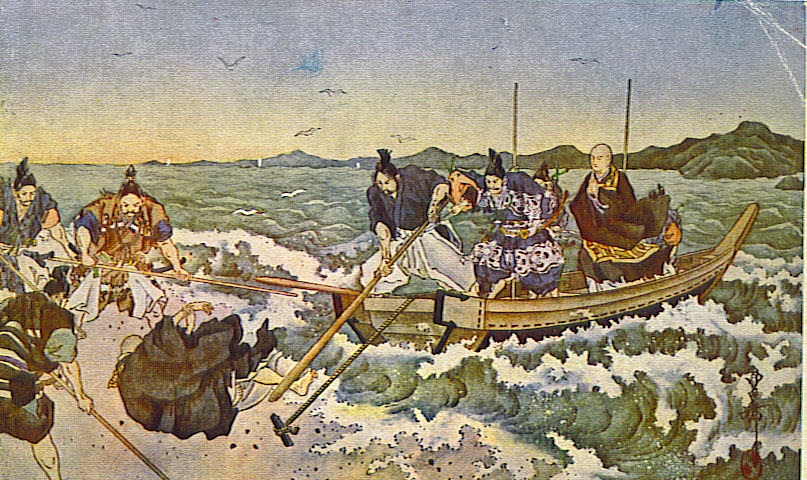Members of SGI practice Buddhism as taught by the 13th-century Japanese priest Nichiren, which involves a daily practice of chanting Nam-myoho-renge-kyo and sections of the Lotus Sutra in front of a scroll called a Gohonzon. The Gohonzon that members of SGI enshrine in their own homes is based on one originally inscribed by Nichiren on October 12, 1279, known as the Dai-Gohonzon. SGI members commemorate this anniversary each year on October 12.
The Gohonzon represents a physical embodiment, in the form of a mandala, of the eternal and universal law of Nam-myoho-renge-kyo, the essence of the Lotus Sutra, and Nichiren's purpose in inscribing it was to make available to all humankind the means to achieve a state of ultimate happiness, or Buddhahood.
The Lotus Sutra reveals that the world of Buddhahood exists as a potentiality in each person at any given moment; it does not lie outside one's daily actions, nor is it divorced from human tendencies. The Gohonzon, which combines Chinese and Sanskrit characters and depicts the Ceremony in the Air described in the Lotus Sutra, illustrates how one can manifest and make predominant the qualities of a Buddha while still possessing qualities of the "lesser" self; tendencies such as animality, anger and hunger.
Nichiren described the Gohonzon as follows: ". . . the five characters of the Lotus Sutra's title are suspended in the center, while the four heavenly kings are seated at the four corners of the treasure tower. Shakyamuni, Many Treasures, and the four leaders of the Bodhisattvas of the Earth are side by side at the top . . . Without exception, all these Buddhas, bodhisattvas, great sages, and, in general, all the various beings of the two worlds and the eight groups . . . dwell in this Gohonzon. Illuminated by the light of the five characters of the Mystic Law, they display the dignified attributes that they inherently possess. This is the object of devotion." ("The Real Aspect of the Gohonzon," The Writings of Nichiren Daishonin (WND), vol. 1, pp 831-32)
Nichiren had first established the practice of chanting "Nam-Myoho-Renge-Kyo" in 1253, and as the years passed his following grew. This, however, attracted persecution from government authorities, leading to the arrest of 20 farmers who were pressured with threats to disavow their belief in Nichiren's teachings. All 20 refused to do so and three of them were eventually beheaded, in what came to be known as the Atsuhara Persecution. It is said that Nichiren inscribed the Dai-Gohonzon in response to the sincere and courageous faith of the ordinary believers. He subsequently inscribed Gohonzon for individual followers, stating, "I, Nichiren, have inscribed my life in sumi ink, so believe in the Gohonzon with your whole heart. The Buddha's will is the Lotus Sutra, but the soul of Nichiren is nothing other than Nam-myoho-renge-kyo." (WND vol. 1, p 412)
Nichiren made clear that the essential teaching of Buddhism is expressed in the phrase "Nam-myoho-renge-kyo." This is why the Gohonzon should not be viewed as an object containing mystical and magical powers, but, rather, as a manifestation of Nichiren's will and desire for all of humanity to attain happiness. This can be achieved through chanting Nam-myoho-renge-kyo and making steadfast efforts toward improving oneself and helping others do the same.
Nichiren's contribution was to establish a clear mirror, the Gohonzon, which perfectly reflects the state of Buddhahood inherent in life, and which could thus enable all people, regardless of their circumstances or ability, to draw out and manifest this Buddha nature. Nichiren's use of script rather than images reflects his commitment that this "mirror" be universal, free of the connotations of race and gender inherent in depictions of specific personages.
Click here for more information on the Gohonzon.
Source: http://www.sgi.org/resource-center/study-materials/inscription-of-the-dai-gohonzon.html


Not any more 🙀
ReplyDelete